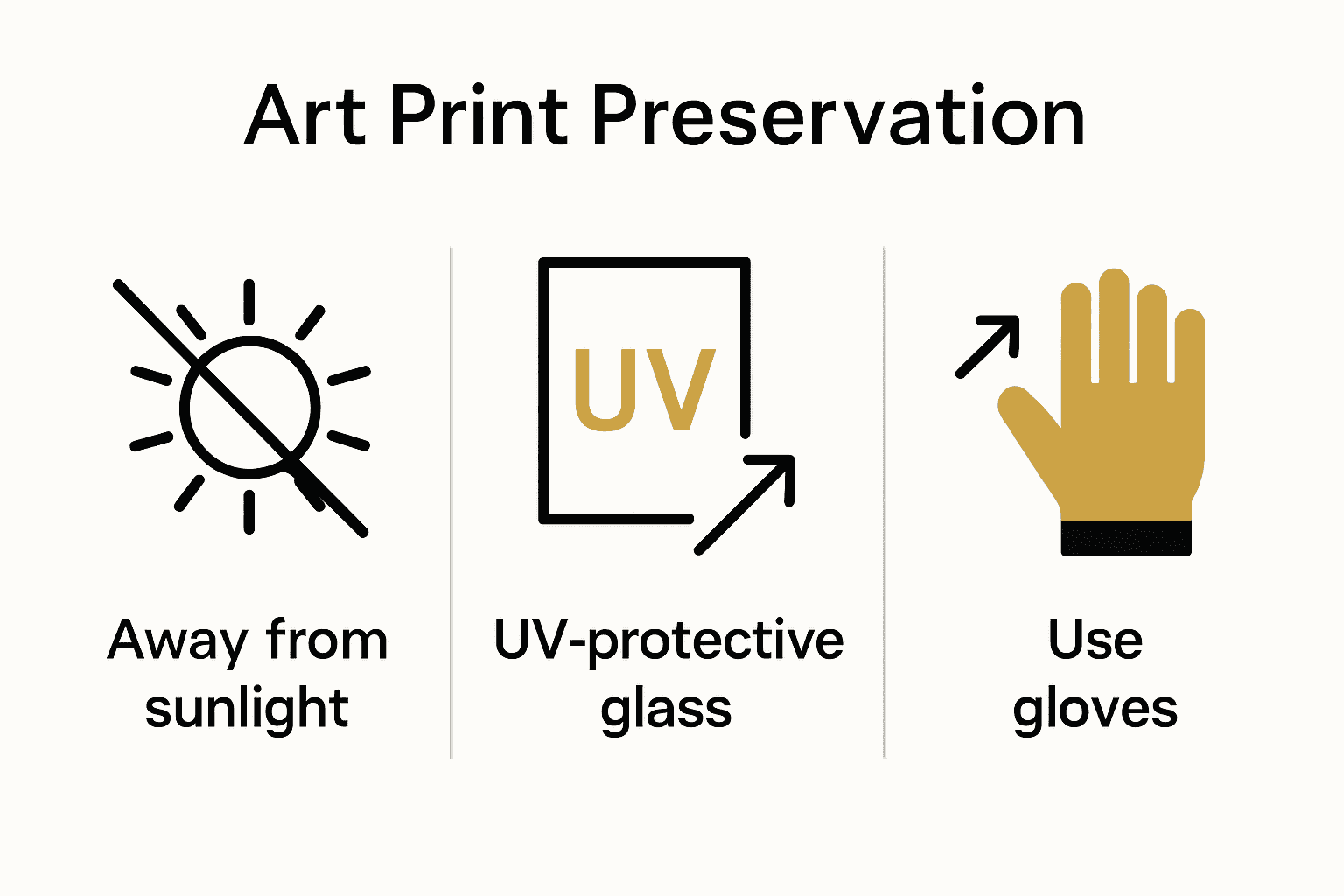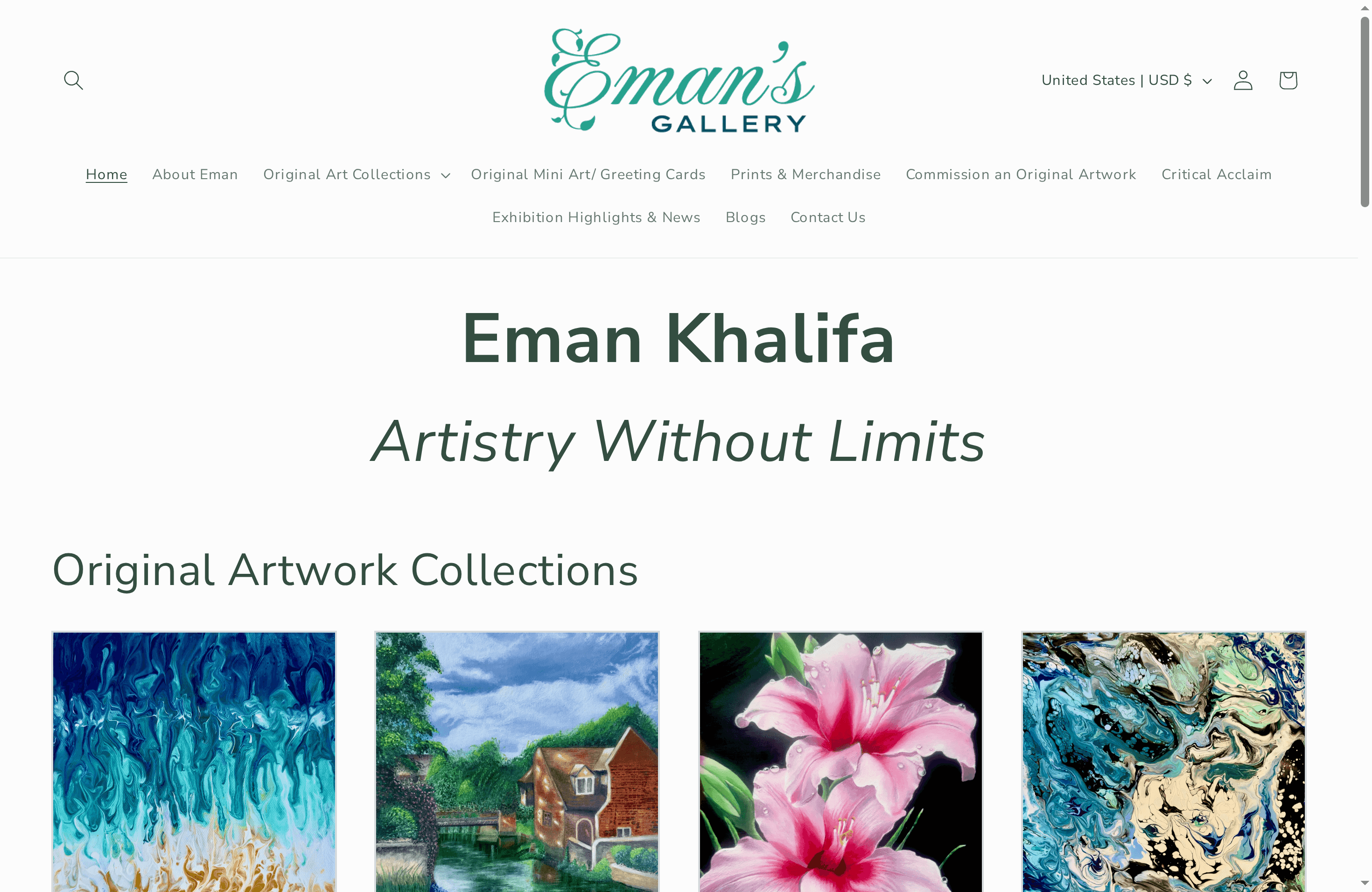
Complete Guide to Why Collect Art Prints
Did you know that limited edition art prints can command thousands of dollars at auction and sometimes increase in value over time? For art lovers, understanding the truth behind art prints reveals opportunities for both collecting and personal enjoyment. Misconceptions often surround the world of prints, but there is depth and variety waiting to be discovered by anyone seeking beauty, investment, or unique connections to artists’ visions.
Table of Contents
- Defining Art Prints And Common Myths
- Major Types Of Art Prints Explained
- Displaying And Caring For Art Prints
- Investment And Emotional Value Of Art Prints
- How To Buy Art Prints Smartly
Key Takeaways
| Point | Details |
|---|---|
| Art Prints Varieties | Art prints include original prints, fine art prints, screen prints, and digital prints, each with unique characteristics and artistic value. |
| Investment Potential | Limited edition prints can appreciate in value; factors influencing this include artist reputation, edition size, and print condition. |
| Preservation Techniques | Protect art prints by displaying them away from direct sunlight, using UV-protective glass, and maintaining a stable environment. |
| Smart Purchasing Strategies | Research the artist, verify print authenticity, and compare prices to make informed art print purchases. |
Defining Art Prints and Common Myths
Art prints represent a fascinating world of artistic reproduction that bridges the gap between original artwork and accessible visual expression. According to frankleblancphoto, art prints are reproductions of original artworks created using various printing techniques to make art more widely available to enthusiasts and collectors.
Contrary to popular belief, art prints are not simply mass-produced copies without value. Limited edition prints can be highly collectible and possess significant artistic merit. As art4homes explains, art prints actually encompass multiple forms, including:
- Original prints created through traditional printmaking techniques
- Fine art prints produced via high-quality methods like giclée printing
- Reproductions that capture the essence of original artwork
The landscape of art prints is more nuanced than many people realize. While some prints are indeed straightforward reproductions, others represent unique artistic expressions in their own right. Professional artists often use specialized printing techniques to create limited runs that maintain artistic integrity and scarcity. These prints can appreciate in value, challenge misconceptions about reproducibility, and provide art lovers with more accessible ways to own and appreciate remarkable visual works.
Major Types of Art Prints Explained
Art prints are far more diverse and sophisticated than many people realize. According to art4homes, there are several distinct types of art prints, each with unique characteristics and creation techniques. These include original prints, fine art prints, screen prints, and digital prints, each offering different aesthetic and artistic qualities.
Traditional original prints involve classic printmaking techniques that have been used by artists for centuries. These include methods like etching, lithography, and woodcut, where artists create intricate designs directly onto surfaces like metal plates or stone blocks. Screen prints, another fascinating category, involve pushing ink through a mesh screen to create vibrant, layered images often associated with pop art and graphic design.
Modern printing technologies have expanded the art print landscape dramatically. frankleblancphoto highlights several contemporary print types that offer exceptional visual quality:
- Lightjet prints: Known for their incredibly smooth texture
- Museum-grade cotton rag prints: Valued for archival quality and longevity
- Canvas prints: Offering a classic, textured artistic surface
- Metal dye-sublimation prints: Recognized for remarkable durability
- Acrylic face mount prints: Providing a glossy, vibrant finish
The diversity of art print types means collectors and art enthusiasts can find pieces that perfectly match their aesthetic preferences, budget, and display requirements.
 Whether you’re drawn to the handcrafted feel of traditional techniques or the crisp precision of digital printing, there’s an art print style waiting to transform your space.
Whether you’re drawn to the handcrafted feel of traditional techniques or the crisp precision of digital printing, there’s an art print style waiting to transform your space.
Here’s a comparison of major art print types and their characteristics:
| Print Type | Key Techniques | Main Qualities |
|---|---|---|
| Original Prints | Etching Lithography Woodcut |
Handcrafted feel Unique impressions |
| Fine Art Prints | Giclée printing Archival methods |
High color accuracy Collector value |
| Screen Prints | Ink on mesh screen | Bold colors Layered images |
| Digital Prints | Inkjet Laser |
Crisp details Modern finishes |
| Lightjet Prints | Light-sensitive paper | Smooth texture Vivid images |
| Cotton Rag Prints | Archival pigment on cotton | Longevity Rich color depth |
| Canvas Prints | Printing on canvas | Classic texture Gallery look |
| Metal Dye-Sublimation | Heat-infused dyes on metal | Durability Glossy brilliance |
| Acrylic Face Mount Prints | Mounted behind acrylic | Vibrant finish High contrast |
Displaying and Caring for Art Prints
Preserving the beauty and integrity of art prints requires thoughtful consideration of display and maintenance techniques. According to frankleblancphoto, environmental factors like lighting and humidity play crucial roles in preventing potential damage to your cherished artwork.
When selecting a location for your art prints, strategic placement is key. Avoid direct sunlight, which can cause fading and deterioration over time. Instead, choose spaces with indirect, consistent lighting that highlights the artwork without subjecting it to harsh UV rays. As recommended by experts, using UV-protective glass and acid-free framing materials can significantly extend the lifespan of your prints.
Proper handling and storage are equally important in art print preservation. Here are some essential care guidelines:
- Always handle prints with clean, dry hands or wear cotton gloves
- Use archival-quality mounting materials that prevent chemical degradation
- Store unframed prints flat in acid-free archival folders or portfolios
- Maintain consistent room temperature between 65-70 degrees Fahrenheit
- Control humidity levels, keeping them around 50% to prevent moisture damage
For art enthusiasts looking to showcase their collection, consider rotating displayed prints periodically to minimize prolonged exposure to light and environmental stressors. By implementing these careful preservation techniques, you can ensure that your art prints remain vibrant, crisp, and beautiful for years to come.
 Explore our curated collection of framed prints that are carefully crafted to maintain their artistic integrity.
Explore our curated collection of framed prints that are carefully crafted to maintain their artistic integrity.
Investment and Emotional Value of Art Prints
Art prints represent a unique intersection of financial potential and personal emotional connection. According to fiveable, limited edition prints can hold significant investment value, particularly when signed by the artist, as their scarcity can drive increased demand and potential appreciation over time.
Beyond monetary considerations, art prints offer profound emotional resonance. art4homes highlights that these artworks allow individuals to own and appreciate pieces that deeply resonate with their personal aesthetic and experiences, transforming living spaces into deeply meaningful environments. Each print becomes more than just a decorative object - it’s a narrative, a memory, a connection to an artistic moment.
The investment potential of art prints varies across several key factors:
- Artist reputation: Prints by established or emerging significant artists tend to appreciate more
- Edition size: Smaller limited editions typically command higher collector value
- Condition: Pristine, well-preserved prints maintain stronger financial potential
- Historical significance: Prints representing important artistic movements or periods
- Artist’s signature: Personally signed prints dramatically increase collectible worth
While financial considerations matter, the true value of art prints lies in their ability to transform spaces and spark emotional connections. Explore our canvas print collection to discover artworks that not only potentially appreciate in value but also speak directly to your personal aesthetic and emotional landscape.
How to Buy Art Prints Smartly
Navigating the art print market requires a strategic and informed approach. According to frankleblancphoto, thorough research into the artist and the print’s edition size is crucial for understanding its potential value and authenticity.
art4homes emphasizes the importance of familiarizing yourself with different print characteristics before making a purchase. Authenticity is paramount, and savvy collectors should look for specific indicators of a print’s quality and legitimacy.
Here are key strategies for making smart art print purchases:
- Research the artist’s background and artistic reputation
- Verify the print’s authenticity through:
- Artist signatures
- Numbered edition certificates
- Provenance documentation
- Examine the print’s condition carefully
- Understand the printing technique and its impact on value
- Compare prices across multiple reputable sources
- Consider the print’s potential for future appreciation
When you’re ready to add a meaningful piece to your collection, explore our contemporary City in Grids print that combines artistic excellence with smart collecting principles. Remember, the best art prints are those that not only hold financial potential but also speak to your personal aesthetic and emotional connection.
Discover the Emotional and Investment Value of Art Prints with Eman’s Gallery
Collecting art prints offers more than just decoration It is about owning pieces that connect emotionally while holding the potential to appreciate over time The article highlights the importance of limited edition prints and the care required to preserve their beauty This can feel overwhelming when choosing the right artwork to invest in and display in your home or office
Explore our curated selection of Artwork Printed on Canvas – Eman’s Gallery where you can find museum-quality prints that bring warmth and personality to any space

Start building a meaningful collection today with handpicked art prints from Eman’s Gallery Our range of pieces captures diverse artistic styles allowing you to create a space that resonates personally Embrace the opportunity to own beautiful art that tells your story and holds lasting value Shop now and transform your environment with timeless art prints from our Contemporary Collection
Frequently Asked Questions
What are art prints and how do they differ from original artwork?
Art prints are reproductions of original artworks created using various printing techniques, making art accessible to a broader audience. They differ from original artwork in that they are not one-of-a-kind pieces but can still possess significant artistic merit, especially limited edition prints.
What are the different types of art prints?
The major types of art prints include original prints, fine art prints, screen prints, and digital prints. Each type has unique characteristics, such as the printing technique used and the artistic qualities they exhibit.
How should I care for and display art prints to ensure their longevity?
To preserve art prints, avoid direct sunlight and choose indirect lighting for display. Use UV-protective glass and acid-free framing materials. Handle prints with clean hands or gloves and store unframed prints flat in acid-free archival materials.
What factors influence the investment potential of art prints?
Key factors influencing investment potential include the artist’s reputation, edition size, condition of the print, historical significance, and whether the print is signed by the artist. Limited edition and well-preserved prints typically command higher values.
Recommended
- Why Self-Actualization Should Be the Foundation—Not the Peak—of Our Ne – Eman’s Gallery
- City In Grids Framed Print - Contemporary Art | Eman’s Gallery
- Reflections on a Landmark Year of Exhibitions – Eman’s Gallery
- Shipping & Tax Policy – Eman’s Gallery
-
- ✨ Explore Eman Khalifa’s original art and fine art prints
- 📸 Follow Eman Khalifa’s art journey on: Instagram @emans_gallery and Facebook Eman’s Gallery
- 📹 Watch Eman Khalifa creating live art on: YouTube @emans_gallery
- Supported by BabyLoveGrowth
